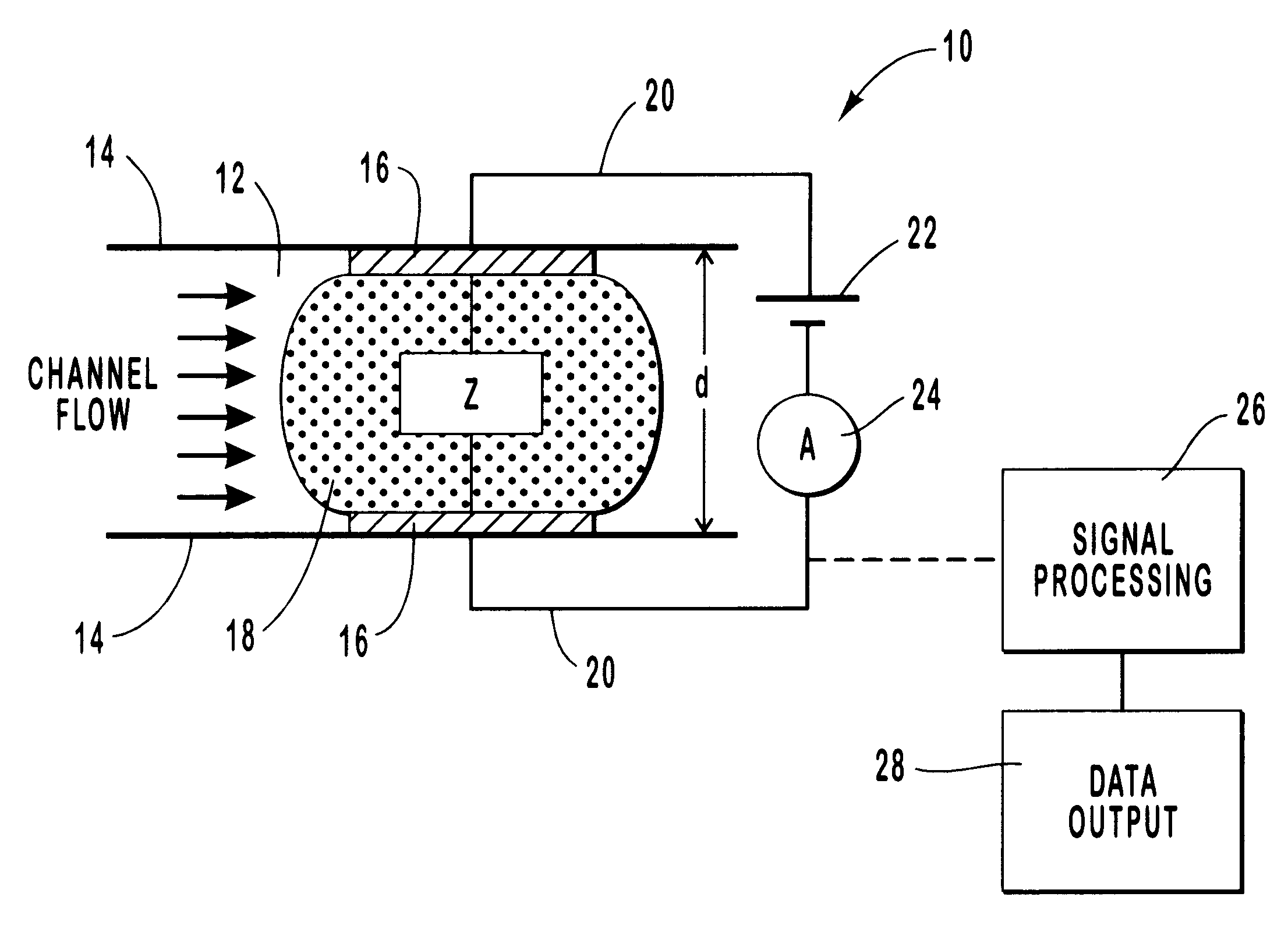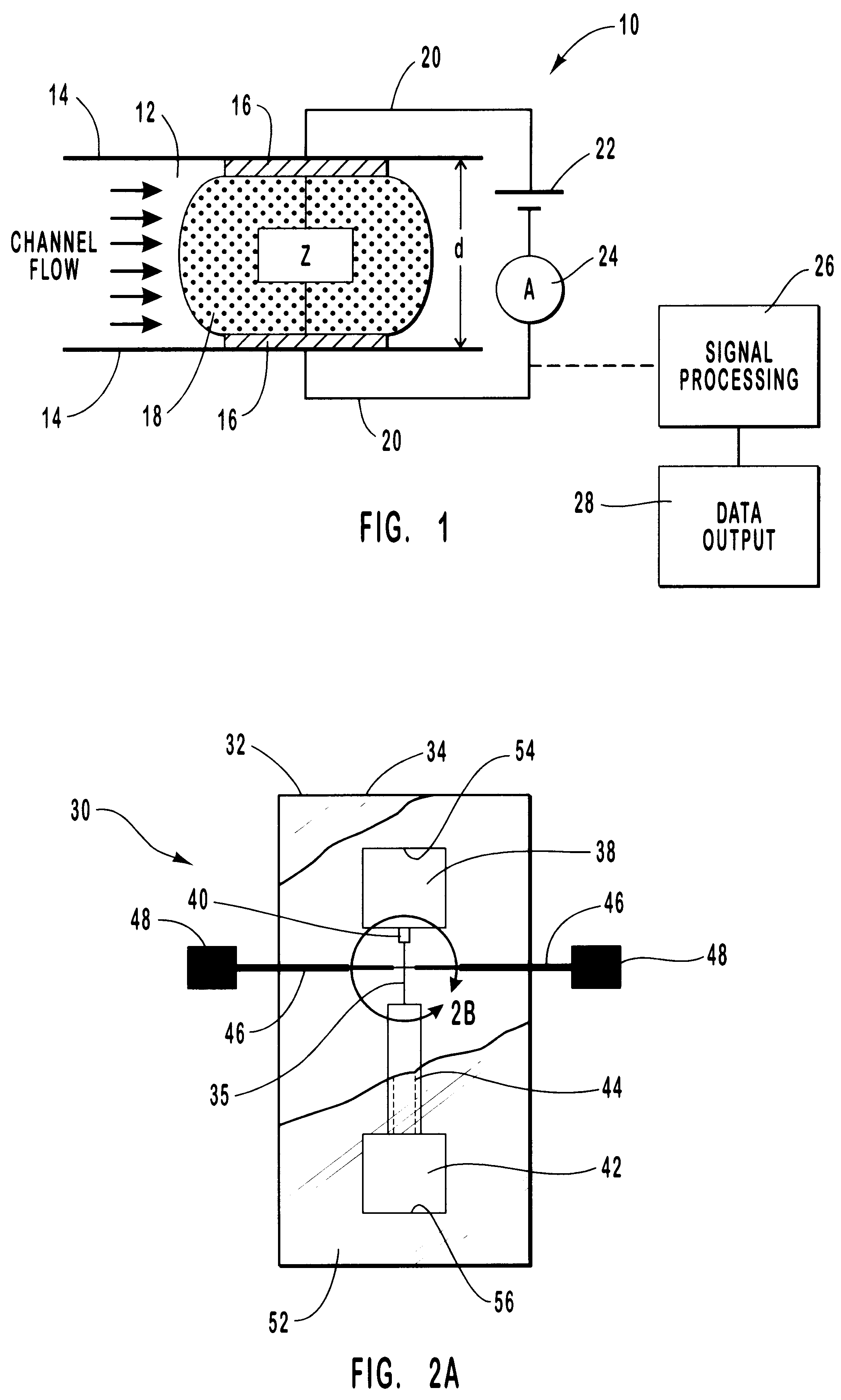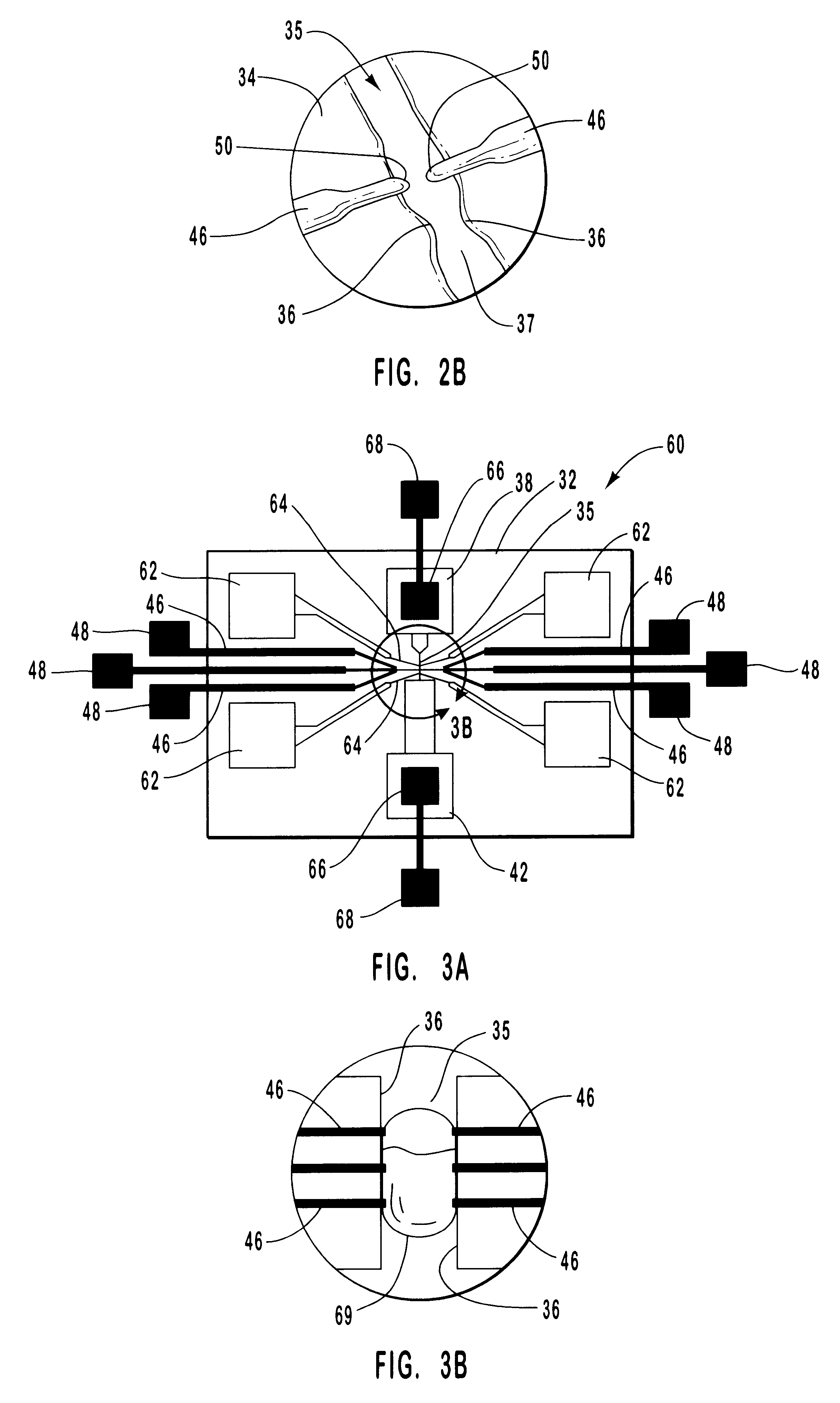Electrical detector for micro-analysis systems
- Summary
- Abstract
- Description
- Claims
- Application Information
AI Technical Summary
Benefits of technology
Problems solved by technology
Method used
Image
Examples
example 2
Two electrode MEI sensor devices were fabricated utilizing micromachining techniques. The sensor devices had small rectangular microchannels with typical cross-sectional areas of about 30 .mu.m.sup.2. Epoxy-based photoresist was used to form cell suspension reservoirs and the sidewalls of the microchannels in a glass substrate. Gold electrodes were electroplated to instrument the microchannels with a detection zone and had electrode tips with a cross-sectional area of about 20 .mu.m.sup.2. Glass coverslips with rectangular access holes were attached over the top of the microchannels.
The overall electrical impedance (Z) of the devices was measured between the gold electrode tips at frequencies swept in the range from 100 Hz to 2 MHz using an HP 4194 network analyzer from Hewlett-Packard (HP). The measured impedance is a function of the geometry and properties of the devices, as well as the interactions in the cell / media in the detection zone. The devices were characterized by measuri...
example 3
Microchannel devices for use in .mu.-EFFF systems were fabricated by the following procedure. A 3 inch (76 mm) single-side polished silicon wafer ( crystallographic orientation) was put into a PE-CVD apparatus and a layer of silicon nitride having a thickness of 2500 .ANG. was deposited on the polished side of the wafer. The silicon nitride was then patterned using photoresist as a mask on both sides of the wafer. Patterning was done such that 1 mm square openings were made in the silicon nitride on the unpolished side of the wafer in a CF.sub.4 plasma. Bulk anisotropic etching was then performed in a 20% KOH solution at a temperature of 56.degree. C. for a period of 24 hours to define the inlet and outlet ports. The KOH etching process left a thin silicon nitride membrane about 1000-2000 .ANG. thick on the front polished side of the wafer. The openings on the polished side of the wafer were about 200 square .mu.m.
Next, a layer of 1000 .ANG. of titanium followed by a layer of 1500 ....
example 4
Microchannel devices fabricated according to the procedure of Example 3 were tested for various characteristics. The microchannels used in these experiments were 6 mm in width and had a height of 26 .mu.m. The ends of the microchannels tapered to the inlet and outlet ports at a 60.degree. angle. All devices tested had a 25 .mu.m detector electrode on the silicon substrate. Once the microchannel and detector were fabricated, they were connected to an HP 6128C DC Power Supply and an HP 3458A multimeter. The multimeter was connected to a PC for data collection and analysis using LabView software. Connections, sample injection, pumps, and other hardware were also implemented to form an operative .mu.-EFFF system. The buffer solution used was deionized water for all experiments.
The experimental matrix took into account the variation of three basic parameters: buffer flow rate, applied voltage and corresponding current, and sample size and composition. Flow rates through the detector were...
PUM
 Login to View More
Login to View More Abstract
Description
Claims
Application Information
 Login to View More
Login to View More - R&D
- Intellectual Property
- Life Sciences
- Materials
- Tech Scout
- Unparalleled Data Quality
- Higher Quality Content
- 60% Fewer Hallucinations
Browse by: Latest US Patents, China's latest patents, Technical Efficacy Thesaurus, Application Domain, Technology Topic, Popular Technical Reports.
© 2025 PatSnap. All rights reserved.Legal|Privacy policy|Modern Slavery Act Transparency Statement|Sitemap|About US| Contact US: help@patsnap.com



